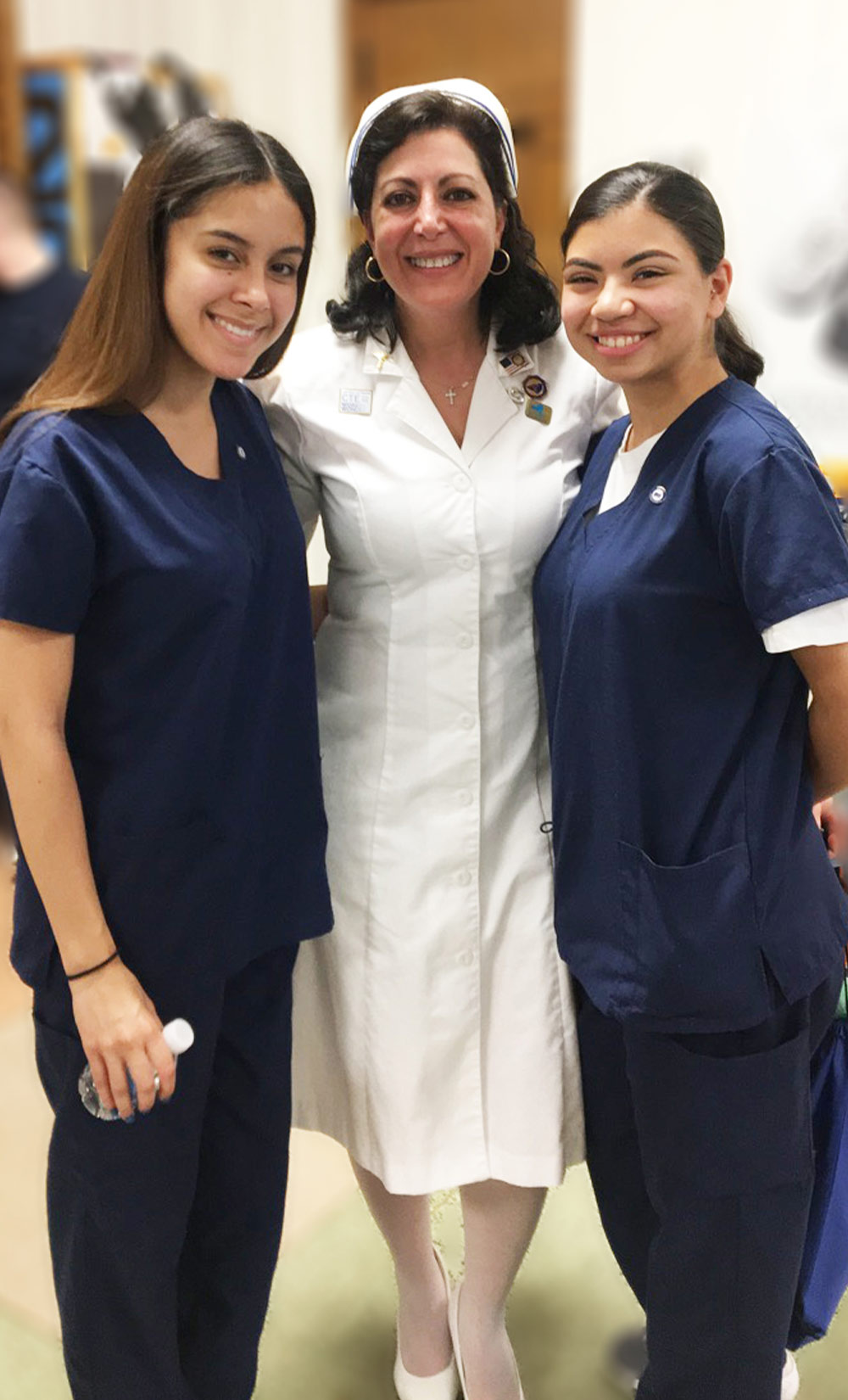CTE works: Profiles from the field
Linda Romano, Newburgh
areer and Technical Education isn’t just a pathway to a career. For many students, it’s a lifeline. Just ask Linda Romano, health science educator at Newburgh Free Academy.
“When I was a student in high school, I was not thriving. I was not on track to graduate,” Romano says. Like many of her students, Romano had a high level of absenteeism and the low grades that go with it. “D was my favorite letter,” she jokes. But a representative from Orange-Ulster BOCES turned that all around when she visited Romano’s school in her neat pink uniform and introduced Romano to the center’s LPN program.
“I came home that day and told my parents, ‘I think I want to do this,’” Romano, a member of the Newburgh Teachers Association, recalls.

provided
When Romano successfully graduated high school the following year, she did it as a Licensed Practical Nurse. She was able to launch immediately into a job she loves and went on to create a successful health care training curriculum for a network of nursing homes in the lower Hudson Valley. In 2006, she was invited to retool Newburgh’s health science/nursing assistant program.
During her tenure at Newburgh, Romano has increased student enrollment in the nursing assistant program from 12 to 214. The program is a three-year pathway that typically begins sophomore year, and includes 108 clinical hours in a health care setting. She also began a spin-off program that provides students as young as first grade with CTE training.
Her program, “Scholars in Scrubs,” which takes place every Saturday, introduces elementary and middle school students to the various systems of the body and related medical specialties and, like Romano’s high school class, it takes place in a classroom designed to mimic a hospital floor, complete with hospital beds and medical equipment.
“The students are doing health and wellness activities, but they also get to play with the walkers and the canes. They lay in the beds. They examine each other’s eyes, weigh each other, take blood pressure,” says Romano. “It’s all the skills that my high school students learn, but just on a smaller scale.”
Getting equipment and keeping supplies in stock keeps her busy. Over the years, donations have included expired lab equipment, furniture from hospitals, old equipment from ambulances, and even outdated COVID-19 tests.
In the end, the nursing assistant program benefits everyone in the community. “It benefits patients. It benefits employers and, of course, it benefits the students because you give them a direction and a career, which hopefully they stay with for a good long time,” says Romano.
Joshua Baker and William Dergosits, Berne-Knox-Westerlo
t Berne-Knox-Westerlo Secondary School, CTE teachers Joshua Baker and William Dergosits are finding innovative new ways to teach tomorrow’s careers today. From the new Engineering and Robotics course they designed to the new facilities they’re creating at the school, including an eSports Lab complete with a student-designed and fabricated racecar simulator and a makerspace that doubles as a plastic filament recycling facility — the duo said it’s all about listening to their students and responding to their curiosities.
“What’s unique with our program is that the core of it really doesn’t change, but the technology does evolve,” said Dergosits, a member of the Berne-Knox-Westerlo TA. “You have to be a lifelong learner to do this.”

The strength of the program is that it’s anchored in a systems-based approach, with a heavy emphasis on planning, drawing, design and production. “I always try to come back to that foundation. If we want to do more advanced things, we still have to go back to those basic concepts to be successful,” said Baker, also a member of the BKW TA. “Students have to be able to visualize how things work and then conceptualize how things go together.”
CTE programs like theirs are expensive to run, and a lack of state funding is a deterrent for many districts. Dergosits sympathizes with that. “We want our kids to learn, but cutting that board the wrong way three or four times is expensive,” he said. Sometimes, technology can be helpful on that front, too. For instance, he said, the district uses Wrench, a virtual reality tool that simulates auto repair, so students can virtually take an engine apart before they get their hands on the real thing.
Still, Dergosits and Baker often find themselves in fundraising mode and they pass those skills along to students.
“We’re throwing in some budgetary stuff, some applied math, some proposal writing,” said Dergosits. “And we’re showing them why those skills from other classes matter.”
The goal of their program is to prepare students to enter the 21st century workforce and, more importantly, to expose them to new experiences that might turn into a lifelong passion, Dergosits said.
“It’s students’ interests and input which pushes them forward. They play a huge role in how they develop and the direction they go in. Their voices are extremely important,” Dergosits said.